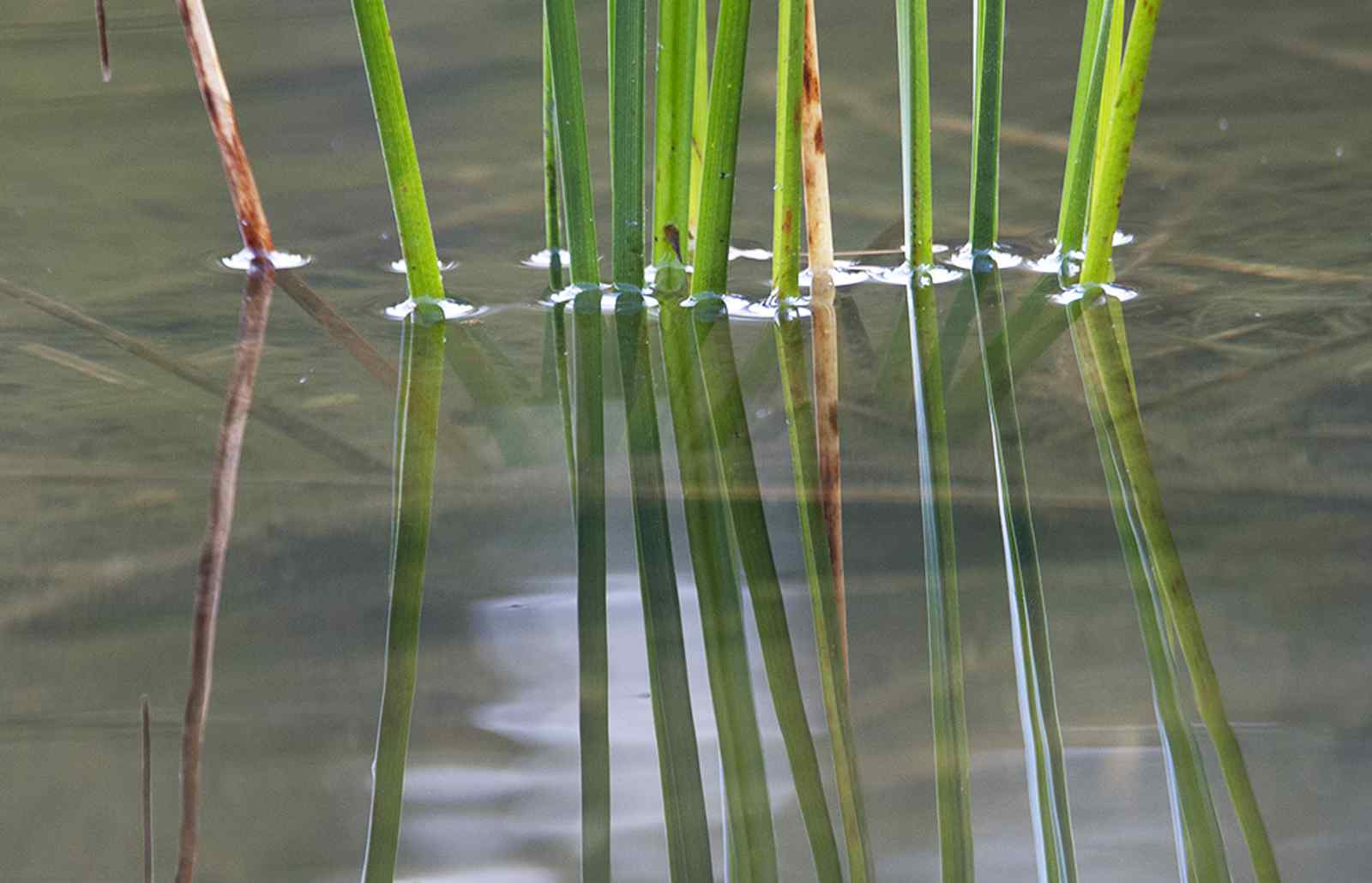Sharing the Credit
I’ve explored nearly all aspects of photography, and I’ve found that besides relating to individuals of many species, I like to do micro-landscapes. Like this one. Gina and I were walking along the margin of Nymph Lake in Rocky Mountain National Park, when this small cluster of emergent sedges caught my eye.
The lake surface was a silky, smoky, and wonderfully imperfect mirror, and I wanted the sedges just like they appear here. I liked the complex angles of the sedge stems, aerial and submerged, and the reflections. But most of all I liked the way the water clung to the stems making little lenses where they pierced the mirror. This was my planned photograph. I thought it could be a strong image, but I wasn’t sure how best to capitalize on the various elements. So, living in a dream where digital film was “too cheap to meter” I shot a lot, hurriedly exploring the various compositions and holding my breath against the certainty that the wind would pick up and destroy my mirror.
A Mallard across the lake noticed our lingering and saw the possibility of a handout — park rules not withstanding. In her experience there were no such rules, and anyway she would have disapproved. Not above a bit of civil disobedience, she steamed across the lake at full cruising speed. Determined? Hopeful? There is the joy of intent in those beady little eyes — I can see it. And I can see the shattered, silky mirror in her wake. NOOOoooooooo !!!~!

But it all ended well. We, Ms.Mallard and me, working together created a stronger image. Of course, I claim it as my own. It is bit of hubris that we all engage in. Taking pride in the beauty of something — like a gorgeous daffodil (picture not included). Even though our only investment was to bury it. You can attribute the subsequent beauty to any force you like, but it is silly to take credit for it. But I digress.
Ms. Mallard brought animation and angularity to a image that was static. Nothing wrong with static, but we find this one more pleasing, and it would never have been but for the duck — who received no compensation for her work other than this acknowledgment.

The focus of the image is has been changed — the dimpled reflections at the base of each stem , fundamentally serene are upstaged by a gentle wave action that brings rhythm to the image and adds complexity as the various lines that appear are not exactly parallel or perpendicular, or horizontal or vertical. And the detail in the rolling ripples of the lower left are pleasing to us. We wouldn’t have it to enjoy without the help of a duck to whom we hereby extend our belated thanks.

